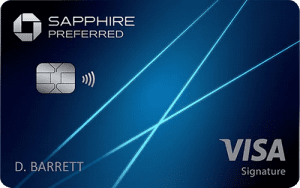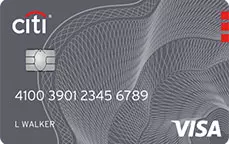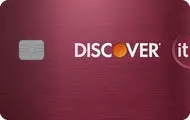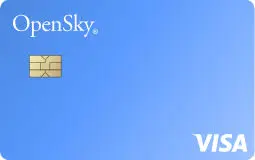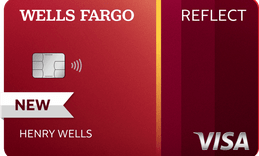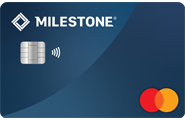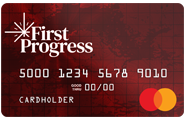Table of Content
Using your credit card to make purchases has become a normal and even natural practice for many of us. It has become almost automatic to use our credit card in everything such that we don’t even think about it anymore.
We use our credit cards to pay for practically anything: for groceries, gas, food, utilities, college tuition, online shopping, etc. I bet you can’t even remember the last time you made a substantial cash purchase, let alone carry a load of cash in your wallet or purse.
Many of us have grown accustomed to paying purchases with a credit card that using cash has become a strange feeling. But what if you need cash in a hurry and you need more than what you currently have in your bank account? This is the time when a cash advance may prove useful.
However, before you go to this option, learn all the pros and cons of using a credit card cash advance. Then, you can decide if it is the correct financial solution for you.
Key Takeaways
- A credit card cash advance involves borrowing cash from the credit card account. Customers can withdraw cash from the credit card using ATM.
- Customers can not withdraw their entire credit limit by cash advance. This is because many credit card companies limit the total amount of cash advance and this limit is usually lower than the credit limit.
- The use of cash advances does have significant financial downsides. Firstly, clients must pay steep fees when using a cash advance, which is typically expressed as a percentage or flat rate. At the same time, cash advances typically carry higher interest than the money spent on purchases.
What Is A Credit Card Cash Advance?
A credit card cash advance means borrowing cash from your credit card account instead of withdrawing from your debit account.
Most credit card companies have a cash advance feature on their cards as a form of convenience to cardholders aside from being able to use it for daily purchases. Getting a cash advance is as easy as withdrawing from an ATM or writing a check at your bank. But take note, that this convenience carries quite a high cost for you.
While financially, getting a cash advance is not very ideal or wise, it makes sense when your money problem is unpredictable or if you find yourself in an emergency.
When You May Need A Credit Card Cash Advance?
If you’re the type of person who only brings credit cards for your day-to-day spending, there might find yourself in a situation where the seller does not accept credit cards.
Some examples of ‘cash-only’ vendors are street-food sellers, farmers' market vendors, small mom-and-pop operations, etc.
In such a case, it might be tempting to just get a credit card cash advance. Some people might also resort to cash advances when they need paper money but don’t have enough in their bank account.
What's The Simplest Way To Take a Cash Advance?
For those who are looking to take a cash advance with a credit card, the simplest way to do so is at a local ATM.
Most credit card companies allow their card members to use the ATM, it will show up as a cash advance on their credit card statement.
When taking a cash advance through an ATM, you are required to have a pin in order to complete the transaction. If you do not have a pin set up, you must first call the company to set up the pin, then you may take the cash withdrawal.
How Much Cash Can You Withdraw?
You can withdraw only up to your cash advance limit, which is usually lower than your total credit limit.
You can review your recent credit card statement or log in to your online account to check your cash advance limit and how much of it is still available. Your available cash advance limit may be lower than your actual limit if you already have an existing balance on the card.
How Much is a Credit Card Cash Advance Fee?
You may have to pay a fee for a cash advance transaction and a higher interest for the amount you have withdrawn.
The cash advance fee could be a percentage of the cash advance amount or a flat rate, depending on your credit card issuer. Check your credit card terms to know the exact fee you need to pay for a cash advance transaction.
The exact amount of your cash advance fee will depend on the amount you’ve withdrawn and the way your credit card issuer calculates the fee.
You’ll also face a cash advance fee if you use a cash advance convenience check, or if you use your credit card for overdraft protection or other cash-equivalent transactions. Keep in mind that the fee for using your credit card for overdraft protection may be different from the standard cash advance fee.
Cash Advance Fee - Example
The common practice is to charge whatever is higher between a flat fee and a percentage of the cash advance. For example, the usual cash advance fee is greater between $10 or 5% of the withdrawn amount.
So, using these parameters, if you take out a cash advance of $100, the issuer will choose between the flat rate of $10 or $5 (5% of $100).
In this case, you will have to pay $10 which is a higher amount. But supposing you take a cash advance of $500, you will have to pay $25 (5% of $500) which is higher than the $10 flat rate.
How To Check What Is My Cash Advance Fee?
Current regulations require your credit card issuer to disclose the method it uses to calculate your cash advance fee.
Check your credit card agreement or the fine print of your billing statement for more information. If you have questions about your cash advance fee, get in touch with your credit card’s customer service department.
The number is usually printed on the back of your credit card. Know how they will compute the cash advance fee so it won’t come as a surprise.
Card | Cash Advance Fee | Cash Advance APR | 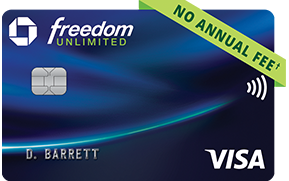 | Chase Freedom Unlimited® | $10 or 5%, whichever is greater. | 24.99% |
|---|---|---|---|
| Chase Sapphire Preferred® Card | $10 or 5%, whichever is greater.
| 25.74% Variable |
| Costco Anywhere Visa® Card by Citi
| $10 or 5%, whichever is greater. | 28.99% Variable |
| Blue Cash Preferred® Card from American Express | $10 or 5%, whichever is greater. | 28.99% Variable |
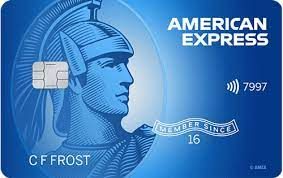 | Blue Cash Everyday® Card from American Express | $10 or 5%, whichever is greater. | 28.99% Variable |
| Capital One Venture Rewards Credit Card | $10 or 3%, whichever is greater. | 24.90% Variable |
| Discover it® Cash Back | $10 or 5%, whichever is greater. | 27.99% variable |
| OpenSky® Secured Visa® Credit Card | $6 or 5%, whichever is greater. | 20.39% Variable |
| Wells Fargo Reflect® Card | $10 or 5%, whichever is greater.
| 29.74% Variable |
Main Drawbacks Of Using A Cash Advance
While its main advantage is convenience – it’s relatively easy to get and does not require you to store any money upfront in any account, there are a couple of serious drawbacks to consider:
- Cash Advance Issuer Fees
Your card issuer will collect this from you. As discussed above, some charge a flat fee per cash advance ($5 or $10). Others charge a percentage of the amount you withdraw, sometimes as high as 5%. Most of the time, it’s a percentage with a minimum dollar amount – such as 3% or $10, whichever is higher.
- ATM or Bank Fees
The institution that will handle the transaction will collect this from you. It could be the owner of the ATM or the branch where you will claim your advance.
- Interest
This is a financial double-edged sword that cuts you two ways. First, you have to pay a higher interest rate for cash advances compared to interest on purchases.
Next, the interest will accrue almost immediately. You will not enjoy any grace period such as what you will have with purchases.
- Payment Allocation Rules
Under Federal Law, credit card issuers will apply the minimum payment to balances with the highest interest rate. However, for anything beyond the minimum, credit card companies get a free hand. Often, it will take longer to pay off a cash advance balance – and obviously, paying longer means you’ll pay more interest in the long run.
Top Offers
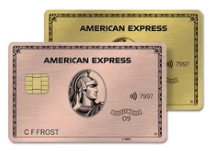
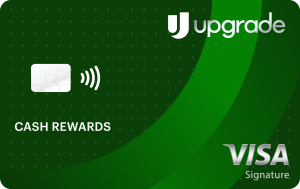
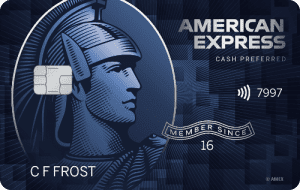
Top Offers



Top Offers From Our Partners
Do Cash Advances Hurt Your Credit?
The good news for people using cash advances with a credit card is that they will not directly hurt your credit score.
What will hurt your credit score is that the cash advance will increase your balance on the credit card, which will raise your credit utilization ratio. The credit utilization ratio is a major factor in determining credit scores, so in a roundabout way, cash advances could hurt your credit score.
Should I Use Cash Advance?
If you step back and look at the entire picture, you will see that the cons really outweigh the pros. It might be too easy to take out a cash advance within your credit limit but unless it is an extreme emergency, it should be your last option.
A cash advance might seem like a convenient option, but it's important to remember that it can be an expensive way to get money quickly. Before going down that route, it’s worth exploring other ways to access the cash you need. While a cash advance can help with an unexpected expense, it’s a costly form of short-term borrowing.
It is crucial that you take stock of your finances carefully and decide logically. If you do decide to get a cash advance, make sure that you have a plan how to pay it off quickly so you can get your finances back on the level. Paying your cash advance fast will have a more positive impact on your finances and credit score. Using this type of facility once in a while has its purpose. However, avoid making it a habit to use this high-interest loan very often.
Alternatives To Cash Advances
As there are a number of problems associated with cash advances, there are a number of alternatives one could use instead of cash advances.
- Credit Card Loan Programs
Instead of cash advances, many credit card companies offer loans to their existing customers. This still has a fee associated with it, but the interest rates are much lower than the cash advance interest rates.
- Third-Party payment services
Some companies allow you to use a credit card to cover expenses that aren’t typically able to be paid with a credit card like rent, utilities, and daycare. An example company would be Plastiq, which has a 2.85% service fee, which will charge your card for the bill, and make out a check to the vendor in your name.
- Buy now, pay later
Other companies like Affirm, Afterpay, and Klarna, will allow you to break up purchases into smaller installments to be paid over time with a credit card. It should be noted that these options do have interest rates and high fees, but if paid off quickly it wouldn’t be too much of an issue.
- Personal Loans
There are a number of different personal loans that lenders offer. While they do have relatively high interest rates, they are still typically lower than cash advances.
- Quick Cash Options
If your financial situation requires a quick cash solution, there are a few ways to remedy your situation. One could cash out their rewards, request an advance on their paycheck, or ask for local assistance.
FAQs
The limit on a cash advance is determined by the credit limit as it is capped at a percentage of your limit. For example, if you have a credit limit of $15,000, and the limit is 30%, the maximum for a cash advance would be $4,500.
Apple Card does not offer cash advance. However, you could use the Apple Card wherever the MasterCard network is accepted and purchase a prepaid card.
The typical cash advance interest rates are anywhere from 17.99% – 29.99% APR.
A merchant cash advance (MCA) is an advance of capital that is paid back using future credit card sales. This is an alternative financing option to the traditional small-business loan.
This is best for small companies that need money immediately in order to cover their cash-flow shortages but come with alarmingly high annual percentage rates in the triple digits.

